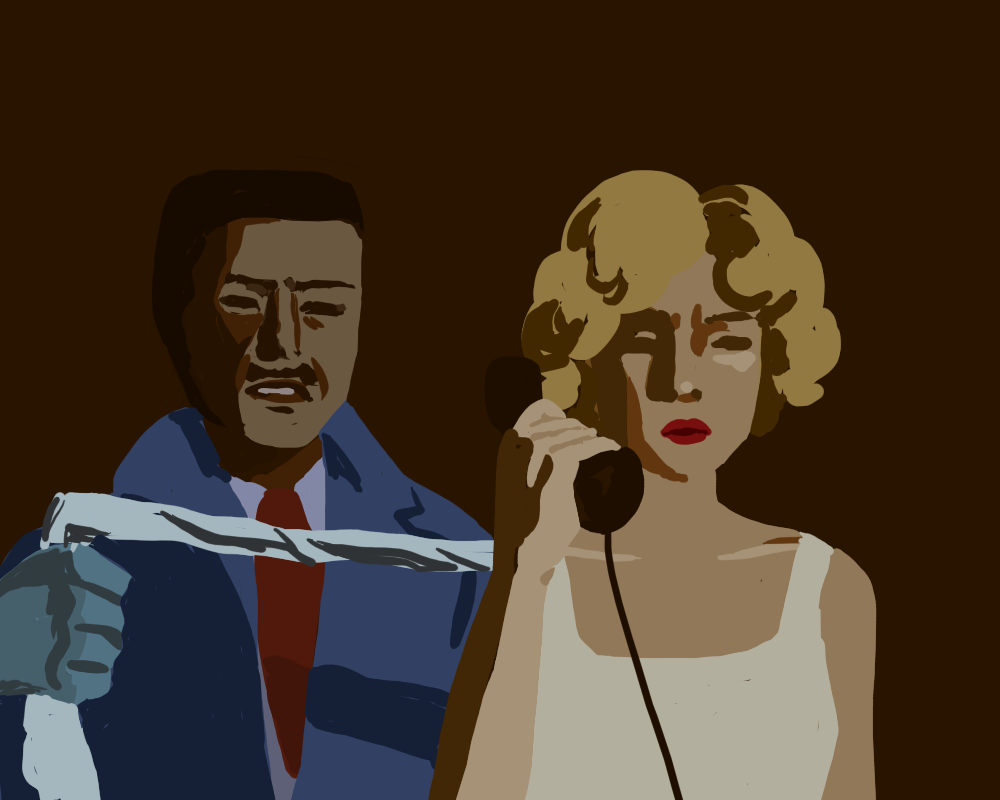Alfred Hitchcock’s “Dial M for Murder” (1954) carefully explores the dangerous moral dilemmas posed by technology and how the proliferation of these innovations can be exploited by malicious agents.
The film is a gripping thriller that follows the story of Tony Wendice (Ray Milland), a former tennis player, who plots alongside a hired hitman, Charles Swann (Anthony Dawson), to murder his wife, Margot (Grace Kelly). However, the plan goes awry, leading to a riveting cat-and-mouse chase wherein every twist and turn keeps viewers on the edges of their seats.
In a world of carefully crafted plans, unpredictability lurks. Even the most intricately designed schemes can unravel with a single unexpected twist, exposing dirty and hidden truths.
Hitchcock employs cross-cutting to great effect, seamlessly interweaving scenes of Tony ’s journey to a telephone booth, Swann’s retrieval of a hidden house key, and Margot, asleep and unaware of the looming danger. As Swann enters the apartment, the strategic use of camera angles casts a shadow upon him, symbolizing his role as Tony’s sinister shadow.
Elevating the tension and anticipation, the film’s haunting theme is crafted with dissonant melodies, eerie orchestrations and a deliberately slow tempo. The synchronization of the music with on-screen events intensifies the overall experience, building towards a climactic boiling point when the intricate scheme abruptly falls apart.
As the narrative unfolds, Hitchcock skillfully transforms the telephone into a powerful instrument for heightening tension, which delves into the movie’s overarching theme of technology. In “Dial M for Murder,” Tony uses the telephone to lure Margot where he intends to kill her. A vital part of the murder plan, the phone is a weapon of manipulation and deceit. The telephones of the ’50s, with their manual dialing process, introduce a natural suspense and uncertainty that is often lost in the immediacy of modern communication.
This is depicted particularly well in the scene with Tony in a telephone booth, when the camera zooms in on his trembling hand dialing each digit with a trembling, sweaty hand. The auditory and visual experience of the rotary dial clicking into place leaves the audience anxiously wondering if Tony can actually execute his plan in time. The act of answering the phone also carries an inherent mystery and anonymity, adding an extra layer of tension. The audience shares in the characters’ apprehension, never quite certain of who might be on the other end of the line, and what revelations or dangers the conversation might unveil.
Modernization was already in motion at the time of the movie’s release, but that early advancement pales in comparison to the rapid technological developments we’ve witnessed in the decades since. In our contemporary world, there are more than just landline telephones. Smartphones, laptops, social media platforms, search engines and algorithms dominate our daily interactions. While these advancements have undoubtedly made our lives more convenient, they also make us more vulnerable than ever to a myriad of faceless and malicious forces. Masked by digital personas, the risk of data breaches, scams and manipulation are ubiquitous.
Although “Dial M for Murder” came out nearly 70 years ago, Hitchcock’s warnings against the dangers of technology feel not only prescient, but incredibly relevant in our modern age.
Contact Irene Jeong at [email protected].

























































































































































Adeline • Nov 29, 2023 at 12:52 am
Wow, the story and ideas are so cool! Super impressed. Gotta catch this movie ASAP!
Rose • Nov 26, 2023 at 4:49 am
I was totally caught up in your writing, feeling the tension like I was watching the movie scene by scene. You’ve got this captivating storytelling vibe going on – seriously impressive! I’ve only seen ‘Psycho’ in Hitchcock’s films, but your description makes me want to dive into this movie right away. It sounds like a must-watch. Your take on life’s irony, where even the best-laid plans can be thrown off by unexpected events, is really cool. And yeah, including the uncertainty of who will answer the phone, the old phone is different from the smartphone we are glued to these days in many ways. Your insights into how technology challenges and impacts our humanity, regardless of its content or degree of advancement, are fascinating. It’s like this timeless comparison that keeps things interesting. Your piece even made me crave another round of Black Mirror. Can’t wait for your next one!
Jeff • Nov 18, 2023 at 12:34 am
Insightful perspective, outstanding writing!